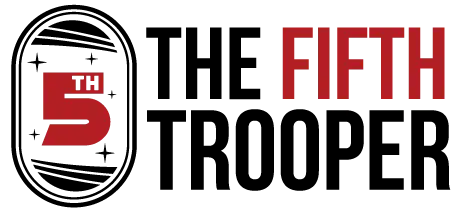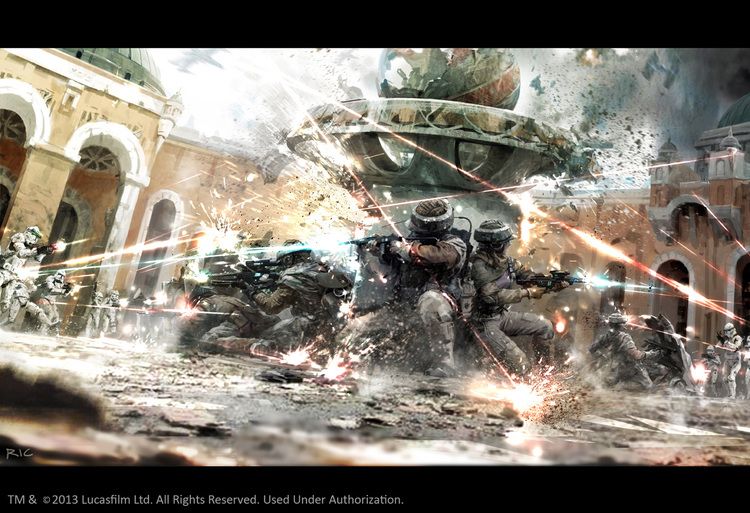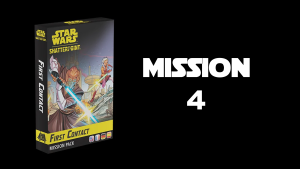When I first started playing Legion, suppression was simply a thing that happened, and I didn’t yet understand that I could use it to gain leverage over my opponent. In my first 800 point game of Legion, I misdeployed a Rebel Trooper unit and watched in horror as they fled the board after being hit by an AT-ST mortar. Not a great start to that game! As I played more games and gained more experience, I began to see the importance of both managing suppression and having a plan for using it against your opponent.
This article is meant to be a primer on suppression, relaying some basic principles and then expanding towards broader concepts. It is still very much a 101 level article. Suppression is a very large topic, and it can’t be discussed without also addressing Courage and Panic. This article will shed some light on how it all fits together. Grasping what suppression is, and what its implications are, is fundamental to a good understanding of how to play Star Wars: Legion.
Suppression: Absolute Basics
[row ]
[col span=”1/2″ ]
[/col]
[col span=”1/2″ ]
Since this is a 101 article, we’ll start with the absolute basics of understanding suppression. This will speak to how you get suppression tokens on your units, what being suppressed means, what panic is, and how your units get rid of suppression tokens.
Suppression tokens are gained when a unit is the victim of an attack or an ability that causes them to gain suppression. If there is at least one hit or crit result in the attack pool, and the defender is a trooper, the defender gains a suppression token. (RRG 60) If there are no hits or crits, no suppression is generated. Weapons with the Suppressive keyword add an additional token, regardless of the presence of hits or crits. Targeted abilities like Jedi Mind Trick add suppression tokens without attacking (or even line of sight). Command cards like Master of Evil and Complete the Mission can also add suppression tokens.
Units can also gain suppression from being displaced by a ground vehicle or creature trooper. Displacement is a very large subject, too. For now, it’ll suffice to say that if your troopers get run over by a vehicle or a creature, you’ll have to take a suppression token.
Units have the opportunity to remove suppression tokens during the Rally step at the start of their activation. Units roll a white die for each suppression token, and remove suppression tokens equal to the number of block or surge results. Units can also spend an action to recover, which allows them to remove any or all of their suppression tokens.
Suppression is important for two major reasons. After its Rally step, if a unit has suppression tokens equal to or greater than its courage value, that unit is suppressed, meaning that unit will lose one of its two actions for its activation. This is generally bad. Consider that a game of Star Wars: Legion has six rounds, and, generally speaking, the maximum number of actions any given unit can perform per game is twelve, so losing one of these actions is quite damaging. The Droid trooper type does not lose actions from suppression, but it can still panic. Sometimes being suppressed is a trigger for various abilities, which will be covered later on.
[/col]
[/row]
This state of being suppressed is only checked for during the Rally step. This means that a unit cannot lose actions if it receives suppression during its activation. For example, if you perform a move as your first action and are attacked by a mine or a ranged standby, the suppression gained from that attack does not take away your second action.
Suppression improves the cover of trooper units by one when defending against a ranged attack. Units that have no cover would improve to light cover, and units already in light cover gain heavy cover. Droid and Creature trooper types are the exception to this rule – they do not gain the benefit of cover from suppression. Normally suppression is assigned after the attack is resolved. The training upgrade Duck and Cover allows you to gain a suppression token during the Dodge and Cover step, allowing you to add the benefits of suppression to the current defender. This is extra significant for units with Low Profile, Danger Sense and Dauntless, which we’ll get into later.
After a unit Rallies, if it has suppression tokens equal to or greater than twice its courage value, it will become panicked. A panicked unit must spend its single action to perform a move at full speed, directly as possible, towards the nearest board edge. Units that panic must also use abilities to expedite this movement, for example, if it would be faster for a unit with the Jump keyword to flee by jumping, it would do so. This is also true for clambering, with the attendant clamber roll that might deal wounds to the panicked unit.
Thankfully, units can ‘borrow’ their Commander’s courage value when they check for panic, as long as they are within range 3. (This radius is often referred to as a Commander’s “courage bubble.”) If the commander has a “-” courage value, units near that commander do not panic. (Darth Vader is the classic example – I like to think a Stormtrooper near him knows that he’s dead meat anyway if he flees in front of Lord Vader.)
Lastly, during the End Phase, you must remove one suppression token from each friendly unit that has one or more suppression tokens. There is one Condition Card that breaks this rule, Hostile Environment. Instead of removing suppression as normal at the end of a round, this only happens if the unit’s leader is in contact with a piece of terrain. This can be brutal if a unit panics into open ground. If they do not make contact with terrain again, there’s a chance they won’t stop panicking and flee off the board. While Suppression is more punishing under Hostile Environment, it’s possible to gain an edge over your opponent if you have the tools to handle the elements and they do not.
If a unit has two weapons, you have the option to split attacks to deal suppression to two different targets. This is not something I am personally fond of, because I like attrition too. However, there may be scenarios where doing this could be appropriate, such as when multiple units are threatening an objective, or when you can stack more suppression onto units that are already suppressed.
Core lesson: Attacking and suppressing enemy units degrades their effectiveness. You want to do this as much as reasonable, especially if you have the means to manage your suppression and the opponent does not. While inflicting casualties and causing attrition does matter, taking actions away from your opponent’s units is equally significant. In the next section, we’ll look at how you can do both at the same time by targeting the correct units.
Suppression and Activation Timing
Imagine the following scenario: Your troopers sustain an attack from an enemy and are suppressed. Thankfully, they take no casualties and successfully rally their suppression when they activate. There are two enemy troopers in range of this unit, the one that shot them that now has a dodge token, and one that has yet to activate. Both of these units are Courage 1 with five squad members in heavy cover. Which do you shoot?
All else equal, the answer is certainly to shoot the one that has yet to activate. If you fire on that unit, not only will you suppress them, but you might also inflict casualties that reduce the power of that unit’s potential counterattack. You are also avoiding the dodge token on the other enemy. Even if you don’t wound any minis in the defending unit, the suppression dealt may deny an action.
Now, imagine the same scenario, but this time you have longer ranged weapons than your opponent. If a unit has to move to get a shot, this means they effectively need two actions to attack. By suppressing that unactivated unit early and at long range, you can deny that unit the opportunity to attack. Doing this repeatedly is a great way to defend your lines, and often shuts down high powered, short range units unless they get help from some other source.
You can do the same thing with equal range weapons by ‘tagging’ a badly cohered mini in the defender. If your unit leader is in range of a mini in the defender while the defender’s unit leader is not in range of any of your own, they will not be able to shoot back at you unless they move. If they can’t Rally the suppression, no shot. This is a great way to punish your opponent for sloppy cohesion.
[message_box bg=”#8E1E1E”] Aside: Will It Stick?
The Rally step is arguably the biggest hurdle to garnishing your opponent’s actions through suppression. Fortunately, you can manage each individual unit’s Rally step by calculating the likelihood that a given unit will actually Rally their suppression. Kyle has already created some handy suppression tables that show you how much suppression is likely to remain through a unit’s Rally step. This information will help refine your decision-making.[/message_box]
Applying more suppression to an already activated unit is also a valid strategy if it means they start the next turn suppressed. Make sure to account for whatever suppression they remove during the End phase when doing this calculation.
There will be times where seizing the initiative on suppressing your opponent will lead to a domino effect. Your well-chosen attacks suppress each of your opponent’s next best activations one after another, creating a situation where you have more actions, and can come out ahead when the smoke clears. Situations like these can be elusive, but when you encounter one it’s the best feeling; You are sailing smoothly while your opponent is blocked at every turn.
Core lesson: Activation timing and suppression are like two sides of the same coin, and understanding how they interact is key to mastering the flow of the game. Suppressing your opponent’s units before they activate is quite powerful and can clinch game wins when applied correctly. Applying more suppression to an already activated unit is also a valid strategy if it means they start the next turn suppressed.
Managing and Manipulating Suppression
There are numerous game effects that allow you to manipulate suppression. Some effects remove suppression tokens, some let you ignore it or mitigate its effects, and some treat suppression as beneficial. Every army needs to include some of these abilities to handle being suppressed. We’re going to name them and dig a little bit into each one.
Suppression Removal: Inspire, Strict Orders, Endurance
Inspire: X is the main method of removing suppression on other units. The unit with the keyword activates and removes X suppression tokens from other friendly units at Range 1-2. Inspire is not optional – both players will need to keep track of its use. You don’t need line of sight for Inspire to work. If you have Inspire 2, you can remove two suppression on one target, or one suppression on two targets; it works both ways.
[message_box bg=”#8E1E1E”]Aside: A Problem with Inspire
Legion is played with alternating activations (I go, you go.) This means that when you remove a friendly unit’s suppression with an Inspire keyword, there’s a chance that the enemy will see it and try to put suppression right back on with their next activation, canceling out your Inspire. You can take steps to ‘protect’ the points of Inspire that you spend in this way through calculation.
One step is to “save” your Inspire for later in the turn, when you have units left to activate that are suppressed, but your opponent has no one left available to counteract what you’re doing. Rebels can keep an order on Princess Leia or an Officer-equipped squad and activate them at an opportune moment. Another way is to use Princess Leia’s 3-pip, “Somebody Has to Save Our Skins” and chain activations together, before the opponent has a chance to shoot back.[/message_box]
Endurance is a 6 point Training upgrade that allows you to remove an additional suppression token during the End phase. This is fantastic for many Courage 2 heroes in particular because these units are often functioning away from sources of suppression removal, so it’s really handy that they can bring their own. There’s also a reason that artwork of a Tauntaun in a blizzard is on the card: during Hostile Environment, this card allows you to remove one suppression during the End phase, even while you aren’t touching terrain. It also happens to be really good on Tauntauns.
Strict Orders is a 5 point Command upgrade that allows you to skip a unit’s rally step to guarantee removing 1 suppression from that unit. The unit in question needs a face-up order token to do this. Strict is excellent for managing suppression on units you intend to keep tokens on, which are generally timing sensitive units like Tauntauns and Commandos. It’s also useful for Corps units during Covering/Coordinated Fire, or for Courage 1 assault units that lose priority, yet still have a face-up order token. When facing Imperial vehicles, be aware that the Pinned Down command card can cancel the effects of Strict Orders by removing the face-up tokens required for it.
Suppression as Benefit: Duck and Cover, Danger Sense
Duck and Cover is an 8 point Training upgrade that allows you to gain a suppression token during the Dodge and Cover step, thereby improving your cover. This is best on units with the Low Profile keyword, translating into heavy cover at the drop of a token. This will result in two total suppression, one from the ability and one from the attack, so keep that in mind when making the choice to use DnC.
Danger Sense: X is a unit ability that allows a unit to roll an additional defense die for each suppression token they possess, up to the value of X. This keyword prominently features on
Pathfinders and Jyn Erso, and goes hand in hand with Duck and Cover to power it up against Ranged attacks. Danger Sense also lets you choose not to remove tokens during your Rally Step and the End Phase, as it’s entirely possible to rally off all those beneficial suppression tokens. It’s a delicate balance between being suppressed and afforded additional protection from Danger Sense, especially with Jyn Erso since she does not posses Dauntless natively. Danger Sense was recently buffed in RRG 1.5.0, allowing this ability to be used while defending against melee.
Triggered abilities: Dauntless and Compel
Dauntless and Compel both trigger when a unit is suppressed. Both of these abilities are very strong because they give the option of a second action despite being suppressed, which breaks the usual pattern.

Compel is the province of the Empire for the time being. Essentially, units with Compel have a ‘Dauntless aura’ for every unit at Range 1-2 of the user. Compel substantially reduces the effects of low amounts (3 or less) suppression during the early turns where there’s generally a lot of moving into position and shooting going on. Despite it’s cost, Compel is immensely strong on those close ranged assault units you were hoping to suppress since it grants them movement, so keep an eye on potential targets for this ability.
Core lesson: Your army needs a way to manage suppression. Whether that’s by removal, triggered or passive abilities largely depends on your faction and list construction. You can also turn suppression to your benefit with specific keywords and abilities. You will also need to mind your opponent’s abilities that break the normal pattern of how suppression works.
Whew, that was a lot of information. Like I said, Suppression is a huge topic, and I hope this article will be a good introduction, as well as a reference in the future.












4 Responses
Absolutely incredible write up! This helps me out as a new player. Thanks!
Do I have to remove suppression during the rally step and/or end phase, or can I leave it?
Thank you so much. This really helped me learn how to effectively use suppression. My friend and I didn’t even use suppression our first game bc we didn’t understand it all.
This is a fantastic article. Thank you! I’m still confused with how suppression affects damage on my minis. ..but now I understand the overall arch of suppression.